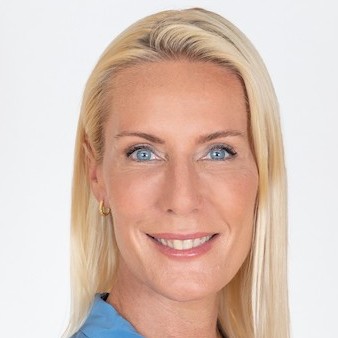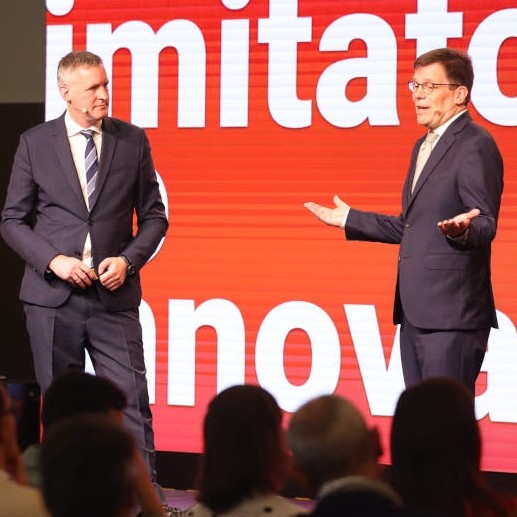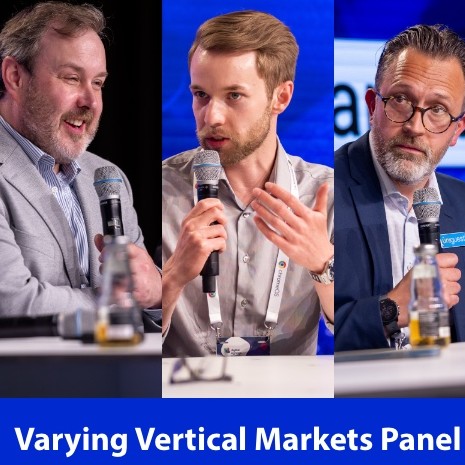Thomas Philippart de Foy, Appspace
Description
The 16:9 PODCAST IS SPONSORED BY SCREENFEED – DIGITAL SIGNAGE CONTENT
One of the things I noticed bombing around the two exhibit halls at InfoComm in June was how most of the digital signage software companies were located in one hall, and some of them not looking all that busy, while there were at least a couple of others in the other hall, and they were packed with people.
One of those companies was Appspace, and it was clear to me why the company was there with a very prominent stand. They were with their people, so to speak.
While Appspace may have started years ago as another digital signage CMS software option, it now refers to itself as a unified workplace experience platform. That's why it was nested in with a bunch of other tech companies that provide the kinds of technologies - like collaboration tools - that drive contemporary workplaces.
The company started out small, but now has 450 staff, offices all over the planet, and about 40% of the Fortune 500 as customers.
I had a chat with Chief Innovation Officer Thomas Philippart de Foy back in 2022, and I wanted to do a catch-up with him because I was intrigued by what the company is up to. I also wanted to know more about how Appspace products have steadily been stitched into the fabric of how a lot of companies communicate, and tied in with many or most of the core tools now used around modern workplaces.
I also wanted to better understand the company's recent announcement of developing native support for its software within Microsoft's Teams. Lots of CMS software companies have tie-ins these days with video conferencing tools, but Thomas explains in our chat how this is different.
Subscribe from wherever you pick up new podcasts.
TRANSCRIPT
Thomas, nice to chat again. We've done a podcast in the past, but for people who maybe don't know much about Appspace and didn't listen to the last one, the fools, could you give me a rundown of what Appspace is all about?
Thomas Philippart de Foy: Hi Dave. Thanks for having me on this podcast again. Appspace has changed a lot over the last 15 or 20 years.
It was a digital signage vendor company many years ago. We are now considering ourselves as more of a unified workplace experience platform, delivering a lot of services to large enterprise customers, whether it's digital signage, which is one of the communication channels that we have, or an app, an intranet, or a whole workplace management suite of products.
So the company has changed. We have around 450 people globally with offices around the world and really focused on the enterprise market, although we do a lot in the education space as well. Around 200 of the Fortune 500 companies use Appspace today.
Where is the company based? Is it in Dallas?
Thomas Philippart de Foy: Well, originally, the company was based in Dallas. Today, a lot of the leadership team is based in Tampa, Florida. So, I would say there is probably a split of headquarters between Dallas and Tampa. Both offices are very important for us in the US.
In the early days, you can correct me, but I think a lot of the development was done in Malaysia, right?
Thomas Philippart de Foy: Yes. We still have a very large product engineering organization in Malaysia. Our Chief Product Officer and co-founder, Stan Stephens is still based over there. So that hasn't changed, but obviously, we acquired a company in the US, The Marlin company, a few years back. So we have additional resources elsewhere in the US and then we acquired Beezy, which is an Intranet company out of Barcelona in Spain. So we now have a big dev team out of Barcelona and some dev people out of Porto in Portugal as well.
I was at Infocomm recently and found my way over to the Central Hall. Most of the digital signage stuff was in the West Hall, but, if you could take a bus over to the Central Hall because of all the construction, I walked through there and saw the Appspace booth and saw it was very large and very, very busy. And you guys were just in the midst of an announcement.
So I thought, well, okay, this would be a good time to kind of catch up on the company and what it's up to that announcement was around Teams integration, and I thought that was kind of interesting because I thought you were already integrated with Teams and it sounds like a lot of companies have done that, but what you're doing was distinct.
Could you explain to me and the listeners what's different about the integration you've done with Teams and with the other platforms?
Thomas Philippart de Foy: Sure. I remember having that conversation with you years back about digital signage on devices in meeting rooms and the benefits it would have for large organizations. Obviously, the pandemic increased the value of content on screens in meeting rooms, whether it's for safety purposes or education on how to use the technology in the room.
We've natively integrated with several platforms, first with Cisco, integrating directly into their Control Hub platform. This allows you to enable signage from their backend. We also integrated Poly with Logitech. Today, we're especially excited because we're natively integrated into Microsoft Teams Rooms, the leading video conferencing platform in the industry, and being integrated directly into Microsoft Teams Rooms (MTR) makes it extremely easy for large organizations to scale signage services to all those devices from MTR directly.
This means that when you enter a room, you're greeted with content on the screen. That content could be a welcome message, instructions on how to use the meeting space, or how to keep it clean after your meeting. It could be corporate messaging, but it can also include Microsoft Teams Rooms instructions, helping users navigate the technology in the room.
We're very excited about the reception we received at Infocomm from customers. I was actually locked into a little meeting room under NDA; it was focused solely on Microsoft, and customers could come in to discover not only what we're doing with MTR but also our integration with Microsoft Teams through our embedded app and our SharePoint integration, essentially everything we're doing with Microsoft.
And what's the difference between when other software companies say they're integrated with Teams and when you say there's a native integration? What's the difference there?
Thomas Philippart de Foy: The first and the most important one is that we're the only vendor that’s certified with Microsoft Teams Rooms. So if you have an issue with your MTR endpoint and you're running a noncertified digital signage solution on it, Microsoft is likely to say, “Hey, you're not using the product as it was designed. Therefore, it's not supported.” Because many large companies are using MTR, you would expect those companies to want to standardize on something certified by Microsoft. So certainly there is that aspect.
The other one is how you deploy it. A lot of companies have so-called digital signage levering a web URL. We're running our app on an MTR endpoint, and it's deployed through MTR. So from a deployment standpoint, from a monitoring, it is a true digital signage endpoint, like any of the other apps-based digital signage endpoint. That gives you many additional capabilities around the narrowcasting of content, broadcasting in case of emergency, and so forth. So I think those two are really critical.
There are other benefits to managing Appspace from MTR. But I would say just first, make sure you're using a Microsoft Certified solution so that you're fully supported and then the second is being able to deploy this at scale and have an MTR endpoint behave as a true digital signage endpoint and not just a web URL inside Microsoft, which is what some companies do with Zoom. That is not true digital signage as you know.
So because it's just a web URL, it's just showing a web page like any other web page versus what you're saying is because it's natively integrated, it's a true endpoint and you, you have the ability to know what's going on with it and manage it as well?
Thomas Philippart de Foy: That's correct. You're able to monitor exactly what content is displaying. You're able to cache content and not stream everything. I mean, it's our full Appspace app that's running on the device.
Okay. So with that, is it a kind of a push situation where your customer-facing salespeople and your business partners are saying to companies: You have this collaboration display in a bunch of your rooms, and it's sitting dark a lot of the time, you could do things with it?
Or are the end-user customers saying, “Hey, we have this collaboration display that's sitting dark a lot of the time, can we do something with it?”
Thomas Philippart de Foy: I think it's a combination of the requests. What we're seeing is there's a lot of digital real estate deployed in companies that is not used all the time, whether because there's no video conferencing happening or there's no call, no meeting happening in the meeting space, but those meeting space are still visible from outside, either because there's a window that opens up to the meeting space or because it's one of those new types of Huddle meeting spaces, which are open.
So there's a request from internal comms and facilities to use as much digital real estate as possible they have to communicate to employees around the workplace and c
























